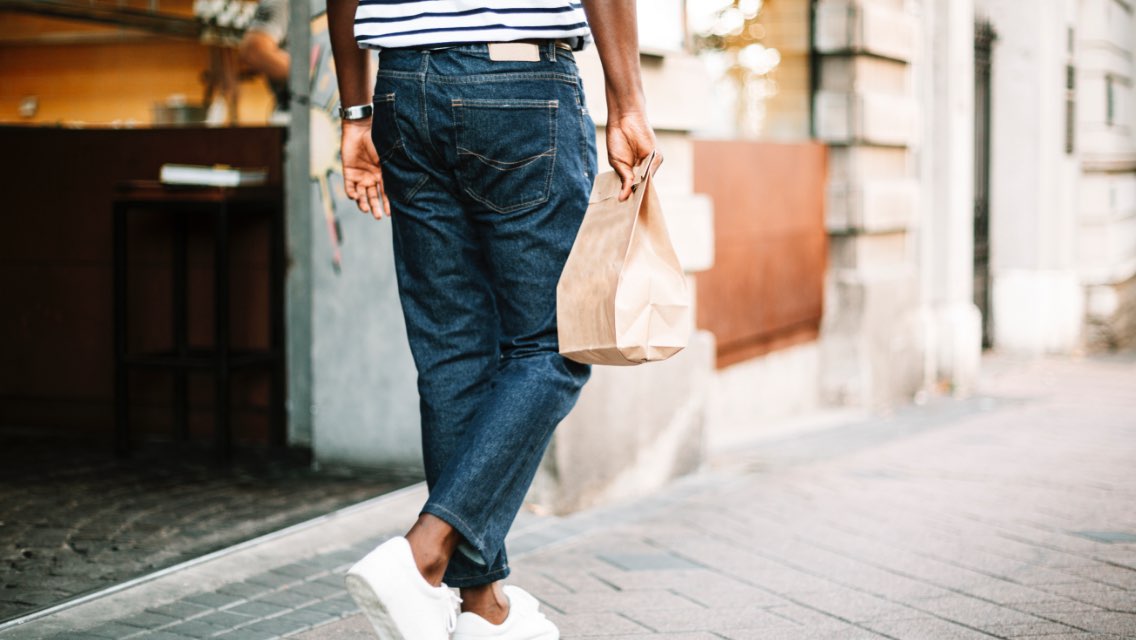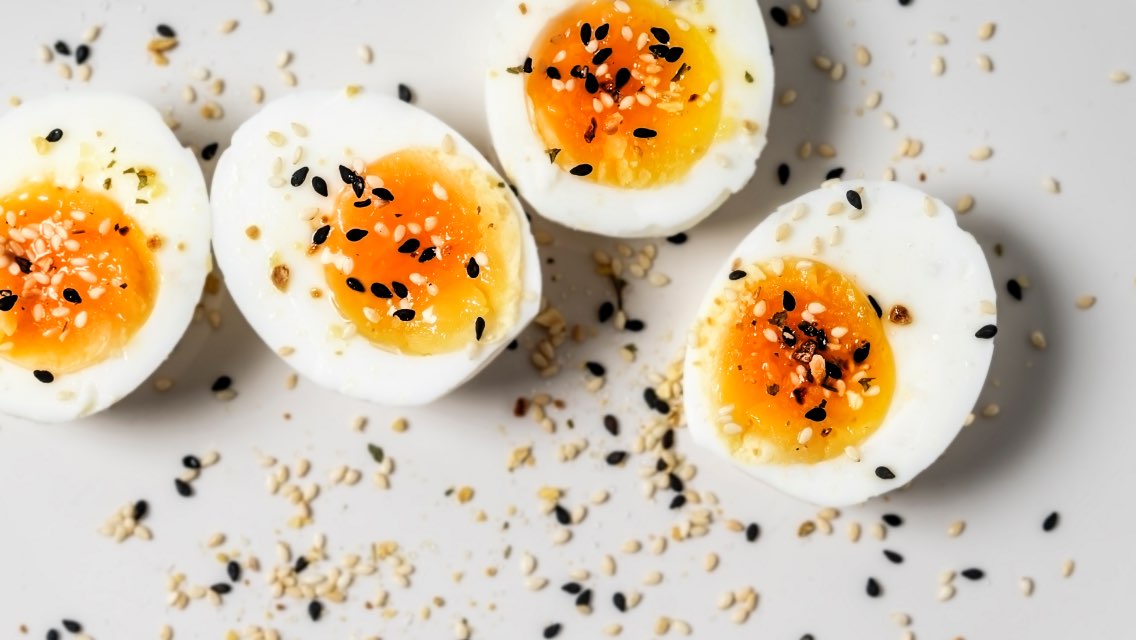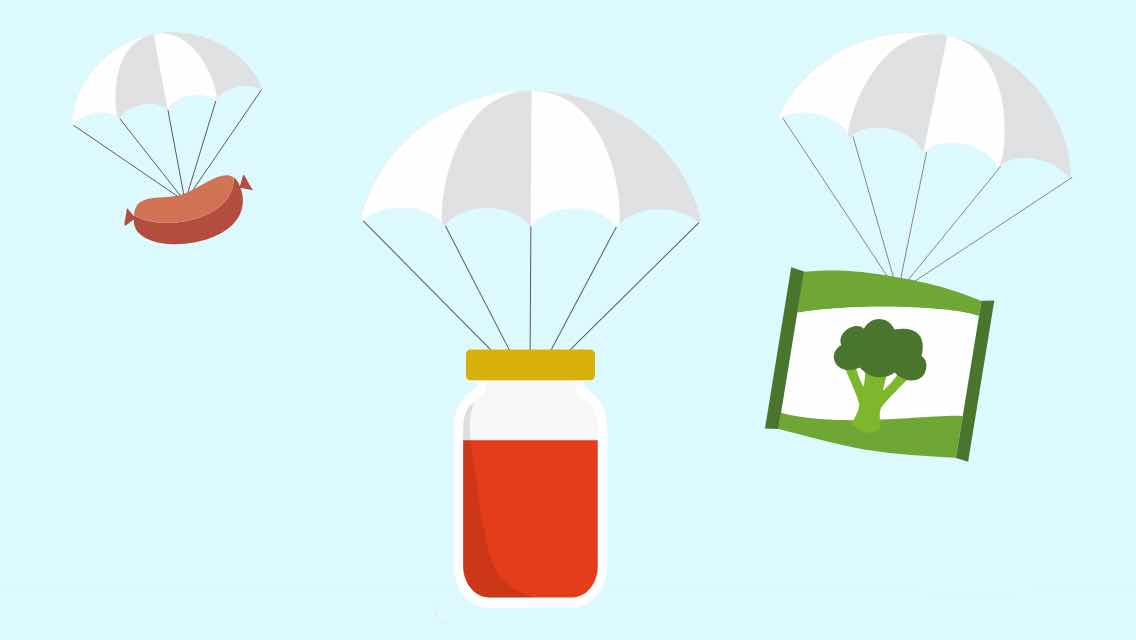When we’re in a hurry, trying to find healthy food options isn’t always convenient. If you’re in need of a quick snack or on-the-go meal, hunger and cravings can often get the best of us and give way to poor eating decisions.
No matter where you find yourself, remember that preparing or picking out healthier food options is possible — all you need is a sound strategy. As a general rule of thumb, our food selections are best when they incorporate some type of lean protein, healthy fat, and good-for-you carbohydrates so that we feel full, energized, and less likely to succumb to cravings later on.
When preparing food ahead of time or searching for something to eat while you’re out and about, I always encourage my clients to utilize a set of food parameters when making a decision. These include:
- Free of artificial colors, preservatives, and sweeteners
- Contain only natural sugar and little to no added sugar
- Contain protein and fiber (key nutrients that promote satiety)
- Made from real, whole foods and natural-food ingredients
With these parameters in mind, it’s also important to acknowledge if you’re in need of a snack or an actual meal. By definition, a snack is light fuel to get you to the next meal, whereas a meal is meant to keep you satiated for at least three to four hours. For snacks, I prioritize getting enough protein and fiber, and for meals, I’ll try to also include some healthy fats and carbohydrates on an as-needed basis.
Knowing there are so many different circumstances and situations that we can find ourselves in, we’ll go through a few common instances where making food decisions can be challenging and how you can tactically make healthy choices no matter your environment.
BYOF: Eating On-the-Go
If you know you’ll be running from gate-to-gate through the airport, jumping between meetings at the office, running errands around town, or attending a last-minute recreational event, bringing your own food (BYOF) is one of the best decisions you can make. When in a rush, we don’t necessarily have time to scan through labels and consider the food parameters, which makes it easy to grab the first thing in sight despite its nutritional value.
To help avoid these types of frantic situations, one of my go-to options is bringing pre-portioned protein powder (my favorite is the chocolate Life Time Vegan Protein+ All-in-One Shake Mix) to mix with water in my shaker cup. To make it even more convenient — and to add some variety that also feels like a treat — I’ll use the sea salt caramel flavor of the Vegan+ All-in-One since it comes in sealed, portable single-serving packets that fit in my work bag. (The single-serving option is also available in the sea salt caramel Whey+ All-in-One Shake mix for those who tolerate dairy, too.)
For those whose offices provide free snacks, this option is a real lifesaver when it comes to feeling full and helping avoid the afternoon slump. You’re less likely to overeat on protein shakes the way that you could if you opt for trail mix, crackers, chips, cookies, or other unhealthy convenience foods.
Quick options I like to have handy include:
- Pre-portioned almonds or pistachios (or other nuts and seeds)
- Pre-packaged grass-fed jerky or beef sticks
- Tuna packets
- Homemade egg cups
- Nut butter packet
- A clean, empty shaker cup with single-serving packets of either Whey+ All-in-One or Vegan+ All-in-One in sea salt caramel protein powder. (When I’m ready, I just empty it in the cup, hit it with water, and go.)
The Corner Store: Buying What’s Best
If bringing your own food isn’t an option, you may find yourself scavenging the shelves at the nearest corner store feeling overwhelmed by all the pre-packaged options. Picking something to eat in this environment can be challenging as many of your options will be packed with sugar or made up of mostly refined carbohydrates. In this instance, grabbing something that is rich in protein and a good source of healthy fat will always be your best option. A few of my go-to favorites are:
- Full-fat cheese sticks
- Full-fat cottage cheese
- Veggies and fruit plus nuts and/or seeds
- Hard-boiled eggs
- Grass-fed jerky or beef sticks
If you find yourself in need of a meal, a solid option is to reach for a salad that has some type of protein, such as chicken, beef, or fish, and contains plenty of veggies. You can often find a salad bar at a nearby grocery store, too.
If you go this route, beware of the sweet-sounding vinaigrettes, as they tend to include a lot of sugar. Opt for topping with olive oil and vinegar instead. If a salad isn’t in the cards, at some places you can grab a hamburger or chicken or fish sandwich and toss the bun. If it comes with fries, substitute with a veggie, apple slices, or side salad.
We also can’t forget about the corner store’s not-too-distant cousin: the concession stand.
Here I will choose a piece of fruit knowing that there will be options that appear to be healthy (e.g. fruit smoothies loaded with sugar, bars with artificial sweeteners, or low-calorie popcorn lacking nutritional value) but are best avoided whenever possible. If you happen to have a nut butter packet on hand, pair that with your fruit to help keep your blood sugar more steady.
If you’re working with a vending machine, go for the nut or seed mixes, jerky, or protein bars — all of which are going to be better options than the trail mix, crackers, chips, and cookies.
Restaurants: Your Menu Playbook
Whether it’s a last-minute family dinner outing, you’re traveling for business, or on vacation enjoying a meal with loved ones, choosing what to eat at a restaurant can feel overwhelming. If clients find themselves in this situation, I recommend they follow this six-step approach:
1. Start with a salad.
When you’re traveling, it’s easy to get out of the habit of eating enough vegetables. If you’re dining in a group, it’s likely someone will want to order appetizers, which are often loaded with extra sugar, fats, and processed carbohydrates. If you order a salad, ask for it to come with the appetizers so you’ll have something to eat while everyone else is. Select a dressing low in sugar, such as ranch, Caesar, or blue cheese on the side. Asking for oil and vinegar is always a trusty fallback as well.
2. Choose your protein.
Depending on the type of restaurant you’re frequenting, the high-carb options (usually pasta or rice-based) might sound appealing, but look for meals that offer a sufficient amount of protein.
Aim to center your meal around hunger-busting protein such as fish or other seafood, chicken, or lean beef. If you don’t see an obvious lean protein choice on the menu, ask your server.
3. Ask for more vegetables.
Main entrées don’t usually doesn’t come alone. Sides often include potatoes, bread, rice, or other starches.
If you want to avoid extra starch, simply ask for extra vegetables instead. Most restaurants have a variety of steamed vegetables, side salads, or similar options. Double up on them if you want to make sure you go home feeling full.
4. Skip the sauces, sugars, and fried foods.
A seemingly nutritious option like fish or chicken can be as high in calories as a serving of lasagna when sauces and creams are used. Beware of how the meal is prepared. If you’re not sure, just ask.
You can opt for the sauces or condiments on the side, or choose ones that are less likely to contain hidden ingredients, such as hot sauce, pesto, or mustard.
5. If you can’t find it on the menu the way you want it, ask for it.
Still can’t find what you’d like on the menu? Almost any restaurant would be happy to make something the way you’d prefer it. If you can get a grilled chicken breast over a salad at a drive-thru, you ought to be able to find something healthy at most sit-down restaurants.
6. If others are having dessert, have something in-hand, such as coffee or tea.
If you make it through the meal eating nutritiously, there’s still the dessert hurdle. If you’re trying to make healthy choices and manage your weight, there probably isn’t a dessert option on the menu that’s going to fit well.
If others are eating dessert, it’s a good idea to have something in your hand so you’re not tempted to share with them. Espresso, tea, or even a small bowl of berries can be satisfying and keep you from digging into someone else’s chocolate cake.
No Matter Where You Are: Don’t Forget Water
When we’re busy, preoccupied, or traveling from place-to-place, it can be so easy to prioritize things like food and neglect drinking enough water. Each day, we recommend clients drink half of their body weight in ounces of water, or more if they’re active.
Recognizing most of our time during travel is spent sitting, it’s easy to think we don’t need to drink as much. If you’re on an airplane, be mindful that it can be very dry, and the varying pressures can affect our levels of hydration and water retention.
One more point here: Aim to bring or purchase water before you get on an airplane as you can’t guarantee the quality of water that the airline provides. If you’re in the car, you might not want to stop as often and may be inclined to bypass drinking water. If this is something you tend to do, remember that even slight dehydration can make you feel hungry and can give way to unnecessary eating.
Lastly: Get Your Workout In
Although this article is about eating, it’s worth mentioning exercising on the road. I’ve found that for my clients and myself, it’s always easier to stay on track with nutrition when away from home by making sure to get in a daily workout, no matter what.
Typically my go-to travel exercise plan is one of the featured programs in the Life Time Digital app, such as Coach Kemma’s Bodyweight Strength routine or Coach Anika’s dumbbell-only Lean + Tone program.
To keep the usual routine going, I make sure to bring my shaker cup to stay hydrated, plus pack my favorite Life Time Pre-Workout complex in the available single-serving packets to have 30 minutes beforehand.
Then to help bolster my recovery, I rely on the individual packets of Life Time Amino Recovery in my shaker cup during the actual workout. (They’re great to have between meals too if your schedule is hectic and you accidentally skip a meal.) Immediately post-workout, I use the Vegan+ All-in-One packets I mentioned above.
Learn more about whether or not a pre-workout is right for you here, and check out the impressive benefits of essential amino acid supplementation here.
When all is said and done, do your best to plan ahead. When you’re in a rush, having food options handy can help you avoid the headaches — and pitfalls — that can come with trying to find something to get you to the next meal.
If your schedule doesn’t allow for prep time, remember there are plenty of ways to make healthier food choices at convenience stores or restaurants when you’re equipped with the right guidelines and strategies.





